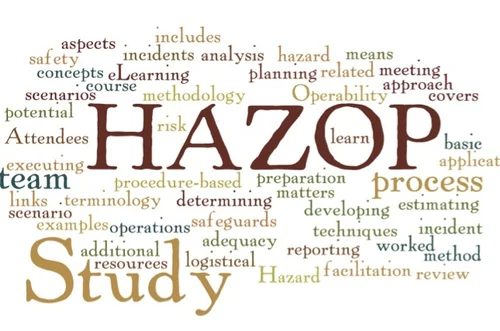The Rise of Remote Safety Audits: Adapting to a Post-Pandemic World

Understanding Remote Safety Audits
The COVID-19 pandemic has significantly changed how organizations conduct safety audits. Traditionally, safety audits required on-site inspections to identify hazards, assess risks, and ensure compliance with safety regulations. However, with the rise of remote work and digital transformation, companies are increasingly adopting remote safety audits to maintain high safety standards while reducing physical presence.
A remote safety audit leverages digital tools, cloud-based platforms, and virtual collaboration to conduct comprehensive safety assessments. Organizations across industries have embraced this approach to ensure compliance with safety regulations without compromising efficiency or accuracy.
The Evolution of Safety Audits in a Digital Age
Before the pandemic, safety audits primarily involved on-site visits, physical documentation reviews, and direct interviews with employees. However, the need for social distancing and travel restrictions accelerated the adoption of remote auditing techniques. With advancements in technology, industries such as manufacturing, construction, and oil & gas have successfully transitioned to digital auditing methods.
Key technological enablers of remote safety audits include:
- Cloud-Based Documentation – Organizations store and share safety records digitally for remote access.
- Video Conferencing Tools – Platforms like Zoom, Microsoft Teams, and Google Meet allow virtual site inspections and employee interviews.
- Drones and IoT Devices – Used for remote site monitoring and real-time data collection.
- Artificial Intelligence (AI) and Machine Learning – AI-driven risk assessment tools analyze data for predictive safety management.
Benefits of Remote Safety Audits
1. Cost Efficiency
One of the most significant advantages of remote safety audits is cost reduction. Organizations save money on travel expenses, accommodation, and logistics associated with on-site audits.
2. Minimized Disruptions
Conducting remote audits ensures minimal disruption to daily operations. Employees do not need to take extra time off to accommodate audit teams, allowing for a seamless workflow.
3. Access to Global Expertise
Companies can engage safety consultants from anywhere in the world without geographical restrictions. This enhances the quality of audits as organizations gain insights from global experts.
4. Enhanced Data Security
Digitally conducted audits ensure better documentation, secure data storage, and easy retrieval of audit reports, reducing the risk of misplaced or lost records.
5. Scalability and Flexibility
Remote audits can be scheduled and conducted at any time, allowing businesses to scale their safety assessments without constraints.
Challenges and Limitations of Remote Safety Audits
While remote safety audits offer numerous benefits, they also present certain challenges that organizations must address.
1. Limited Physical Inspection
One major limitation of remote safety audits is the inability to conduct hands-on inspections. Some hazards require direct physical assessment, making remote evaluations less effective in high-risk environments.
2. Technology Dependence
Successful remote auditing relies on stable internet connections, advanced software tools, and high-quality video capabilities. Organizations with outdated IT infrastructure may face challenges in implementing digital audits effectively.
3. Data Privacy Concerns
Sharing sensitive safety-related information over digital platforms may pose cybersecurity risks. Companies must implement stringent data protection measures to prevent breaches.
4. Training and Adoption
Employees and auditors need adequate training to efficiently use remote auditing tools. Resistance to technological change may slow down adoption rates.
Key Components of an Effective Remote Safety Audit
To ensure a successful remote safety audit, organizations must integrate best practices and leverage the right tools. Here are essential components of an effective remote safety audit:
1. Clear Objectives and Audit Scope
Define the goals, scope, and expectations of the audit process. Establish key performance indicators (KPIs) to measure compliance.
2. Use of Advanced Digital Tools
Invest in high-quality video conferencing software, cloud storage, and real-time monitoring tools such as drones and IoT devices.
3. Secure Data Management
Implement cybersecurity protocols to protect sensitive audit data. Utilize encrypted communication channels for data transfer.
4. Regular Follow-Ups and Verifications
Conduct periodic virtual inspections and follow-ups to ensure ongoing compliance and risk mitigation.
The Role of Remote Audits in Process Safety Management
Remote audits play a crucial role in Process Safety Management (PSM), which focuses on identifying, evaluating, and mitigating risks associated with hazardous processes. By leveraging remote auditing, industries such as chemicals, pharmaceuticals, and oil & gas can continuously monitor compliance with PSM regulations while maintaining operational efficiency.
To ensure comprehensive process safety compliance, companies conduct digital documentation reviews, virtual hazard identification assessments, and online training sessions for employees. Process Safety Management remains a key component in remote audits to mitigate operational hazards.
How Hazop Study is Integrated into Remote Audits
A Hazop Study (Hazard and Operability Study) is an essential part of safety audits, particularly in high-risk industries. Remote Hazop studies involve:
- Virtual brainstorming sessions with cross-functional teams.
- Digital risk assessment tools to evaluate process deviations.
- Cloud-based documentation to maintain audit records efficiently.
The integration of remote Hazop Study techniques ensures that potential hazards are identified and addressed proactively. Hazop Study continues to be a valuable tool for ensuring operational safety in remote environments.
The Importance of Fire Audit in Remote Safety Assessments
Fire safety remains a critical aspect of workplace risk management. Remote Fire Audits help organizations evaluate their fire protection measures without requiring on-site inspections. These audits include:
- Review of fire safety protocols and emergency response plans.
- Virtual walkthroughs using video conferencing for site assessments.
- Digital analysis of fire risk management reports.
By integrating Fire Audit into remote safety audits, organizations ensure compliance with fire safety standards and enhance workplace safety preparedness.
The Future of Remote Safety Audits
As digital transformation accelerates, remote safety audits will continue to evolve. The integration of artificial intelligence, automation, and machine learning will enhance the accuracy and efficiency of safety assessments.
Predicted trends in remote safety audits include:
- AI-Powered Risk Assessments – Predictive analytics to identify safety hazards before they occur.
- Blockchain for Compliance Tracking – Secure and transparent audit record management.
- Virtual Reality (VR) Training – Immersive training programs for employees on safety procedures.
- IoT-Based Monitoring – Real-time hazard detection using smart sensors.
Conclusion
The shift towards remote safety audits is reshaping workplace safety management. While challenges exist, the benefits of cost efficiency, accessibility, and data security outweigh the limitations. Organizations must invest in digital tools, secure data handling, and employee training to optimize the remote safety auditing process.
For businesses prioritizing workplace safety, working with experienced Safety Consultants ensures compliance with evolving safety regulations. As industries adapt to the post-pandemic landscape, remote audits will remain a vital component of safety management, providing a scalable and efficient approach to ensuring workplace safety.







